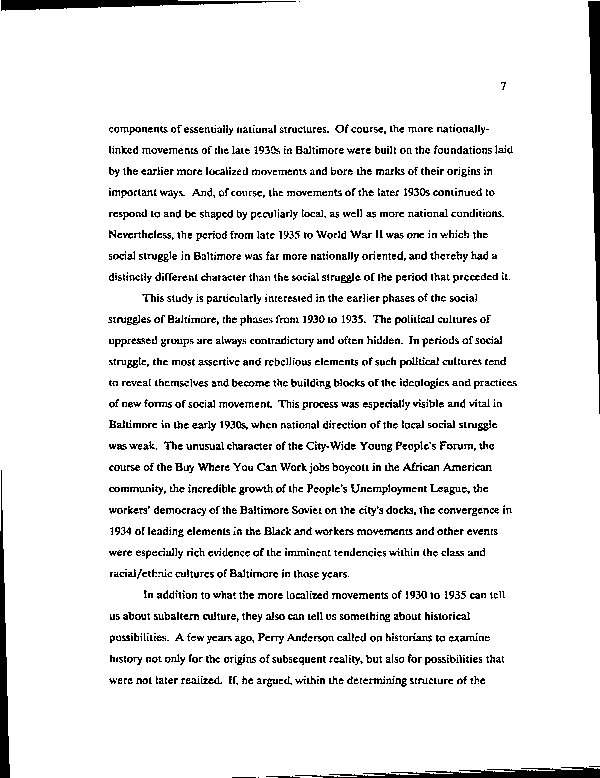|
components of essentially national structures. Of course, the more nationally-
linked movements of the late 1930s in Baltimore were built on the foundations laid
by the earlier more localized movements and bore the marks of their origins in
important ways. And, of course, the movements of the later 1930s continued to
respond to and be shaped by peculiarly local, as well as more national conditions.
Nevertheless, the period from late 1935 to World War II was one in which the
soda! struggle in Baltimore was far more nationally oriented, and thereby had a
distinctly different character than the social struggle of the period that preceded it.
This study is particularly interested in the earlier phases of the social
struggles of Baltimore, the phases from 1930 to 1935. The political cultures of
oppressed groups are always contradictory and often hidden. In periods of social
struggle, the most assertive and rebellious elements of such political cultures tend
to reveal themselves and become the building blocks of the ideologies and practices
of new forms of social movement. This process was especially visible and vital in
Baltimore in the early 1930s, when national direction of the local social struggle
was weak. The unusual character of the City-Wide Young People's Forum, the
course of the Buy Where You Can Work jobs boycott in the African American
community, the incredible growth of the People's Unemployment League, the
workers* democracy of the Baltimore Soviet on the city's docks, the convergence in
1934 of leading elements in the Black and workers movements and other events
were especially rich evidence of the imminent tendencies within the class and
racial/ethnic cultures of Baltimore in those years.
In addition to what the more localized movements of 1930 to 1935 can tell
us about subaltern culture, they also can tell us something about historical
possibilities. A few years ago, Perry Anderson called on historians to examine
history not only for the origins of subsequent reality, but also for possibilities that
were not later realized. If, he argued, within the determining structure of the
|

